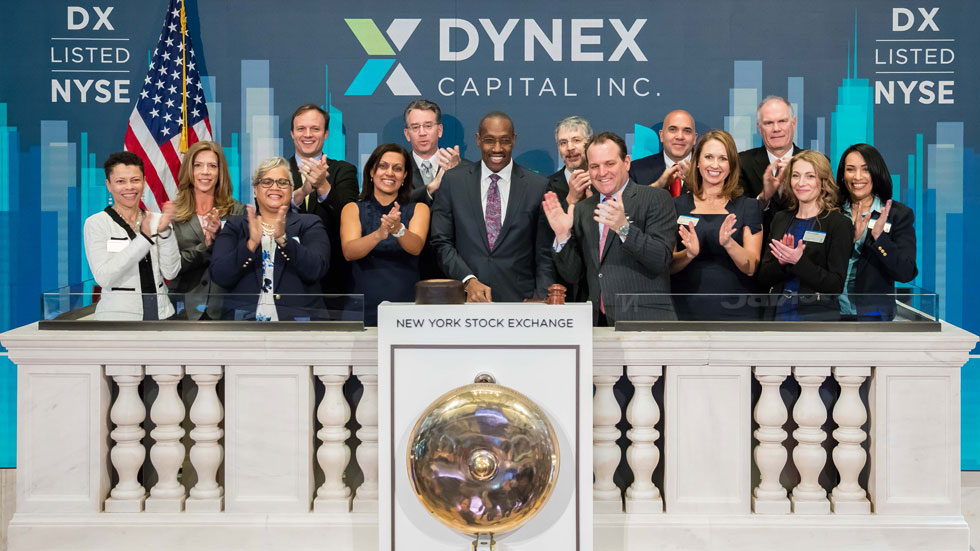Dynex Capital, Inc. (NYSE: DX) is a 30-year-old mREIT that has reacted to a more complicated global macroenvironment by narrowing its focus to concentrate on the highest credit quality, most liquid assets available.
The company invests in both agency mortgage-backed securities (MBS) and non-agency MBS and commercial mortgage-backed securities (CMBS). Dynex Capital also has investments in securitized single-family residential and commercial mortgage loans originated by the company from 1992 to 1998.
“We earn money by generating a net spread between the yield on our assets and the cost we pay to finance those assets,” says Byron Boston, president, CEO, and co-chief investment officer of Dynex Capital. Boston is also 2020 chair of Nareit’s mREIT Council. “We enable investors to be able to invest in a diversified pool of mortgage assets across the U.S. and earn a return on that investment. Investors not only get exposure to real estate, but they also get an above average cash dividend,” he adds.
A Strategic Evolution
Over its three decades, Dynex Capital has employed numerous business models—it has been a direct lender of both commercial and residential loans; has financed itself via the securitization market, repo market, and warehouse lines; and has invested in both lower grade securities and high-grade securities.
“We are very dynamic and flexible in our investment strategy, and we are constantly making a decision on where we find the best risk-reward trade off across a broad set of assets and liabilities,” Boston says. “We examine what different risks we might want to take based on the environment and it changes through the years based on the risk environment and the opportunity.”
It was approximately five years ago that Dynex Capital strategically shifted its focus.
“The reason for this change in focus was our characterization of the global risk environment, which we consider to be complex and uncertain,” Boston says. “Hence, our portfolio balance sheet is nearly 100% guaranteed by the U.S. federal government, Freddie Mac, and Fannie Mae paper.”
The company has both commercial and residential assets (approximately 50/50) and has always maintained the principle of diversity across credit categories.
“In this environment, we are heavily considering the credit quality of the asset and the liquidity,” Boston says. “We believe this is a time period where it is essential to maintain more than adequate liquidity. We are sitting in investments that have the best risk-adjusted returns today in our view.”
A Strong Team
Eric Hagen, director of equity research at KBW, has been following Dynex Capital for almost six years and he likes what they’re doing in what he calls “a challenging time for mREITs” because of a tight yield curve.
“Byron Boston and his team have been doing this a long time, and I give them credit for managing their interest rate risk in a very disciplined way, regardless of the cycle,” he says. “The hedging associated with interest rates and prepayment risk on mortgages they own is really quite sound.”
Dynex Capital and the leadership team has been totally dedicated to these assets and this type of business model the entirety of their careers.
“We are extremely experienced, and we have managed through every crisis in this fixed income market since 1981,” Boston says. “Experience is the key to success in this business—very direct experience. We were not investment bankers, we were not analysts or salespeople, we have been asset managers in this space or closely related space through our entire careers.”
Looking Ahead
When it comes to growth in the future, Boston sees opportunities on both sides of the balance sheet. On the funding side, he believes there will be opportunities to diversify funding sources, lengthen maturities, and better match fund its balance sheet, which reduces risk. In terms of the asset side, he sees opportunities as the government footprint in the U.S. housing finance market shrinks, creating opportunities for experienced mortgage investors to take the place of that.
Therefore, he says, the future for the company is bright as its financing costs have come down and its net interest margin has started increasing.
“I think the environment as it relates to the macro for the company looks a lot better today than it did a year or two ago,” he says. “In the last four to five months, the Fed has eased 75 basis points and the curve has steepened out. Our net interest margin has recently improved, it bounced off its lows this past quarter and was up 11 basis points and the trend suggests that will continue given the Fed has eased. So, the macro environment seems more supportive to an expanding net interest margin and just a better environment for mREITs for a spread lender in mortgage assets today.”
